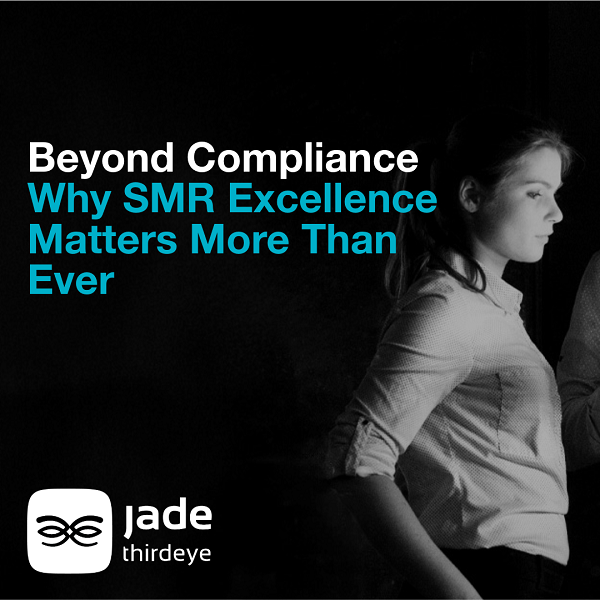
Beyond Compliance: Why suspicious matter reporting excellence matters more than ever
By Olly Hodges, Head of Product at Jade ThirdEye
The recent enforcement action against Mercedes-Benz Financial Services should serve as a stark reminder to every financial institution in Australia: when it comes to suspicious matter reporting (SMR), silence equals negligence.
At this year’s ACAMS conference in Sydney, I spoke with many compliance professionals, and the conversations kept circling back to the same challenge: SMR. Whether it was struggling with submission quality, drowning in manual processes, or simply feeling overwhelmed by the complexity of reporting requirements, the message was clear: Australia’s financial crime professionals need help.
These conversations take on new urgency in light of AUSTRAC CEO Brendan Thomas’s recent revelations about the non-bank lending sector. The statistics are sobering: almost 90% of non-bank lenders failed to submit a single suspicious matter report in 2024, while 89% claimed they had no high-risk customers at all. As Thomas stated, “No business is devoid of risk. With such low reporting rates, the full picture of potential criminal exploitation remains hidden.”
AUSTRAC’s Evolving Regulatory Approach
AUSTRAC’s approach is evolving rapidly. The regulator is moving from individual compliance assessments to sector-wide interventions, focusing on outcomes rather than tick-box exercises. This shift means institutions can no longer rely on flying under the radar—regulators are now equipped with sophisticated data analysis tools and sector-wide intelligence that can expose gaps in reporting patterns across entire industries.
The Mercedes-Benz case demonstrates the consequences of this new approach. AUSTRAC didn’t just identify compliance failings in isolation; they highlighted systemic issues, including “inadequate transaction monitoring” and weak systems to “detect and escalate suspicious activity.” The external audit requirement sends a clear message: institutions that fail to demonstrate robust capabilities for reporting suspicious activity will face intensive scrutiny.
The Real Cost of SMR Neglect
What many institutions don’t realise is that poor SMR practices create a cascade of compliance risks. Failing to identify and report suspicious activity effectively means missing critical intelligence about customer behaviour that could prevent fraud, money laundering, and reputational damage.
Through my interactions with compliance professionals, I regularly hear of individuals spending two hours crafting each SMR, manually copying data between systems, second-guessing field requirements, and crossing their fingers that their submissions wouldn’t be rejected. This manual approach creates unsustainable workloads in an environment where AUSTRAC expects reporting volumes to increase significantly.
Technology as the Solution
The solution requires smarter processes, not more staff or longer hours. Modern SMR technology can transform reporting from a burden into a strategic advantage. By automating data validation, pre-populating reports with existing customer and transaction data, and providing direct regulatory submission capabilities, institutions can reduce SMR preparation time by up to 80% while improving submission quality.
More importantly, integrated SMR systems like Jade ThirdEye provide complete visibility of reporting history alongside monitoring data, enabling compliance teams to identify patterns, track trends, and build stronger risk intelligence. When every report is automatically validated against current regulatory schemas and linked to comprehensive customer profiles, teams can focus on analysis and narrative development rather than data entry and error correction.
The Choice Ahead
AUSTRAC’s message is clear: the days of minimal reporting and reactive compliance are over. “We will be monitoring indicators of risk and harm and, where we see gaps emerging, we will take action,” Thomas warned in his recent speech.
For Australia’s financial institutions, particularly those in the non-bank lending sector, the choice is stark: evolve your SMR capabilities now, or risk becoming the next regulatory enforcement action headline. The technology exists to make suspicious matter reporting efficient, accurate, and strategic. Every institution must seriously consider whether they can afford to continue with inadequate SMR processes.


